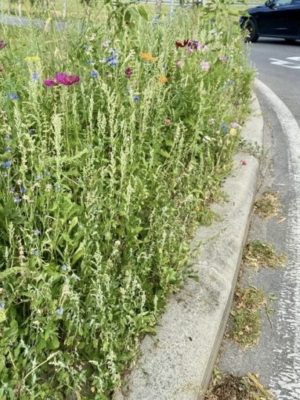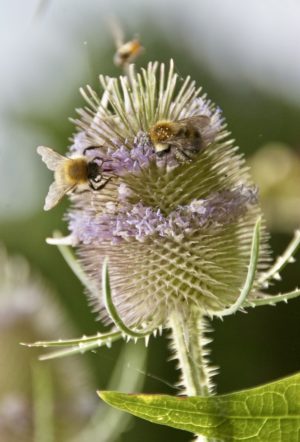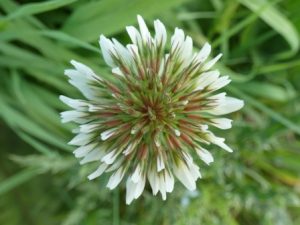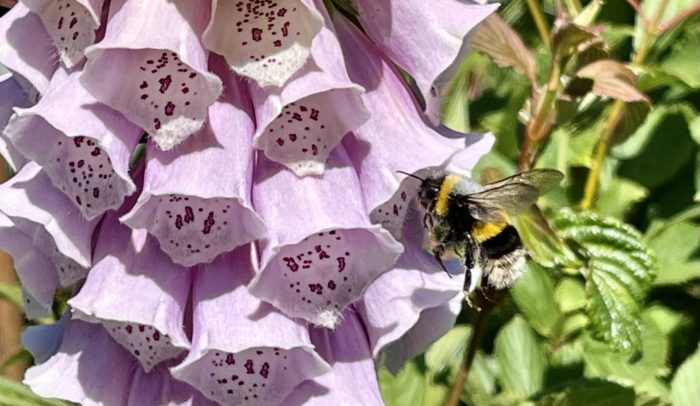Mini-meadows of wild flowers

The decline in insects numbers, especially pollinators is a cause for concern. Insect numbers have fallen as natural ecosystems have been lost or disrupted by the expansion of farming and urbanisation, plus the increased use of pesticides and herbicides. The loss of insects not only affects the pollination of many commercially important plants, but also affects the animals and birds that feed upon insects. So, there are knock on effects throughout food chains and ecosystems.
Plantlife has launched a number of initiatives, such as
to help offset the decline in insect numbers.
Now work done in Professor Goulson’s laboratory at Sussex Univeristy by Janine Griffiths-Lee (a PhD student) suggests another approach to increasing insect / pollinator levels in urban settings. Her research has demonstrated that creating a small patch of wild flowers in gardens can go some way to address this fall in insects numbers.  She and colleagues managed to enlist the help of some 150 volunteers distributed across the UK (many were members of the Buzz Club*). Each volunteer set aside a wild flower area - a mini-meadow (two metres by 2 metres). Some of the volunteers then sowed the mini-meadow area with a commercial seed mix of wild flowers, others sowed a seed mix designed / thought to be ‘beneficial to pollinators’. A third group did not receive wild flowers seeds but were asked to set insect traps and record insects in their gardens in the same way as the two ‘wild flower seed groups’.
She and colleagues managed to enlist the help of some 150 volunteers distributed across the UK (many were members of the Buzz Club*). Each volunteer set aside a wild flower area - a mini-meadow (two metres by 2 metres). Some of the volunteers then sowed the mini-meadow area with a commercial seed mix of wild flowers, others sowed a seed mix designed / thought to be ‘beneficial to pollinators’. A third group did not receive wild flowers seeds but were asked to set insect traps and record insects in their gardens in the same way as the two ‘wild flower seed groups’.
The results were interesting and revealing. The mini-meadows proved to be resource-rich habitats, with an increased numbers of wild bees, more bumblebees, solitary bees and also wasps (when compared to the control group with no wild flower seed sowing). There were differences in the insect populations for the two groups of seed. The commercial mix attracted more solitary bees and bumblebees, whereas the ‘designer mix’ of seeds attracted more solitary wasps. There was no difference in the number of hoverflies that visited the two types of wild flower rich mini-meadows. Solitary wasps, whilst not pollinators, are important in that they prey on a number of insect pests of fruit and vegetables.
Clearly, the planting of small areas in gardens with wild flowers could do much to encourage the numbers and variety of insects / pollinators visiting (or possibly help control the damage done by insects pests).
 * The Buzz club is a citizen science initiative. The UK has a tradition of using the enthusiasm of volunteers to collect data for ecology research. The Buzz Club projects are focused on gardens - see here. Membership of the Club is free and the research projects are generally involve no cost. You might be asked to supply simple equipment or to cover the cost of sending samples back to the club based at Sussex University. Should you sign up then you will receive :
* The Buzz club is a citizen science initiative. The UK has a tradition of using the enthusiasm of volunteers to collect data for ecology research. The Buzz Club projects are focused on gardens - see here. Membership of the Club is free and the research projects are generally involve no cost. You might be asked to supply simple equipment or to cover the cost of sending samples back to the club based at Sussex University. Should you sign up then you will receive :
- A ‘thank you’ email from the team!
- Information direct to your inbox of new projects being planned.
- A newsletter about what your data is telling us.
Professor Goulson has previously written a blog about bumblebees for woodlands.co.uk

Comments are closed for this post.
